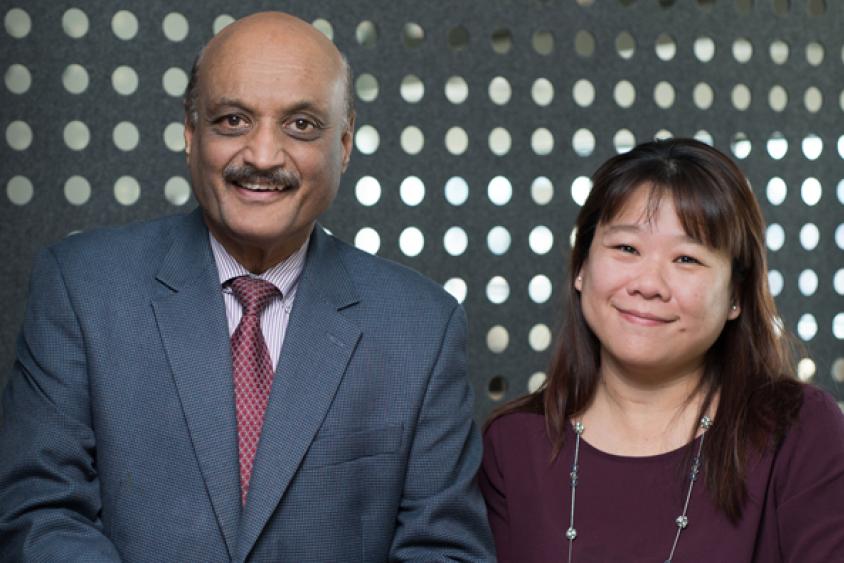Keeping your workforce ahead of the competition

MIT Professional Education provides professionals with continuing education that allows them to stay not merely current, but with a window into trends for the future.
Companies wanting their employees to have the latest knowledge is nothing new. Ideas needing to be refreshed is also nothing new. The pace of keeping up, though, is what has sped up; knowledge, particularly in new technology areas, can be obsolete in less than a year, sometimes even sooner. This is the ongoing challenge that MIT Professional Education (MIT PE) confronts and addresses. With its short-duration courses, certificate programs for industry professionals, and customized programs for corporations including ILP members, MIT PE aims to provide the latest practical knowledge in a diverse set of disciplines. Courses are constantly being updated with new relevant findings and developments, and MIT professors create interactive settings in their classes to take advantage of contributions from experienced practitioners from around the world. As Bhaskar Pant, the executive director of MIT PE says, "We aim to provide high value to our clients, and for that, we need to be both market responsive and just in time."
Holding a non-captive audience
MIT PE and the ILP have always been intertwined in their missions. The two entities were announced on the same day in 1949 with the same intent: to better serve the needs of industry and the Institute's industrial partners. Since its inception, the focus of MIT PE has been to provide professionals with continuing education that allows them to stay not merely current, but also with a window into trends for the future, Pant says. In the past, courses have centered on topics such as electric motors and computers. Now, they address currently in high demand topics such as artificial intelligence, applied cybersecurity and people analytics.
Next year, Pant says, the complement of topics may change, because they have to resonate with the needs of the participants at the time they are looking. This distinguishes the continuing education dynamic from that of traditional degree programs. Undergraduate students are a captive audience. They are required to take certain classes. "They don't have the option to bail out," he says. But professionals come with a base of knowledge, choose the courses, and expect MIT to deliver on their high expectations. "Our job at MIT PE is to make it worth their while," Pant says.
And it's also to have them come back. This puts a different kind of pressure on MIT faculty who teach professional courses. "They have to really get into high gear when addressing the needs of experienced professionals," Pant says. Giving straight lectures is not good enough. Classes have to be interactive, which certainly applies also to online and blended courses, designed for professionals who can't easily come to the MIT campus.
But it's hard to replicate the benefits of the in-person classroom experience. For that reason, MIT PE offers 2-5 days long, Short Programs on the campus every summer. There are over 40 courses to choose from, covering a range of topics, such as information technology, data science, design and manufacturing, and energy and sustainability. The class environment is a mix of lecture and discussion, and, in what marks all the courses, they address real-world applications, says Lily Fu, Director of Short Programs for MIT PE. For example, the unit's Additive Manufacturing class involves 3D printing, and participants perform actual design exercises in the course professor's lab as part of the curriculum.
In a biomedical course, which covers the design of medical devices, the professor found that some of the engineers in his class were building artificial hearts, but had never touched a real heart before. So, he brought the students into his lab to dissect one, enabling them to gain further insights into the organ's intricacies. "All our courses have some form of hands-on work where you will definitely not be sitting in your seats all day," Fu says.
Spending more time on campus
To learn more expansively, professionals have the option of taking MIT PE's four-course Professional Certificate Programs. Currently, concentrations are available in three topic areas: technology and innovation, artificial intelligence and machine learning, and real estate. Some participants choose to spend up to a month on campus to complete most, if not all, of the course requirements for a certificate, which need to be completed over two years.
MIT PE programs draw professionals from all over the world. In 2017, they came from more than 70 countries. Ideas are shared among attendees. They network, and some even talk of forming new companies. That's an inevitable consequence, since innovation and entrepreneurship are embedded in the culture of MIT, says Pant, adding that while there is the risk of an employee leaving his or her company for a new opportunity after attending courses, there's a more likely scenario. "You're going to have an employee who comes back rejuvenated and with a greater sense of purpose and commitment," Pant says. "They're going to think more expansively and have those new ideas, which are MIT-based, and they're going to implement them to the advantage of the company."
And even if there was a higher risk of losing employees, businesses have to invest in the professional development of their people. There's no real alternative. "No company can afford to stand still and hope to survive," Pant says. "Skills and knowledge of their employees are going to set them apart from their competition."
Source: ILP


